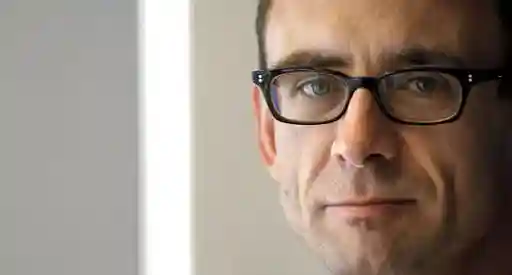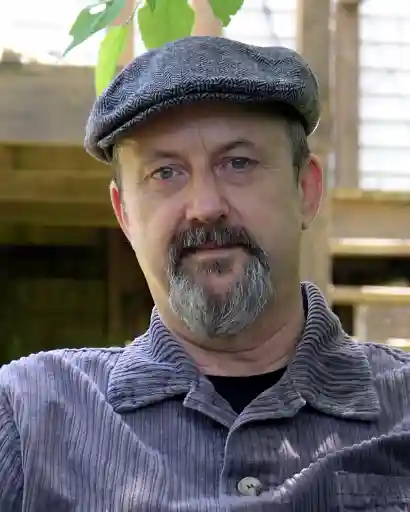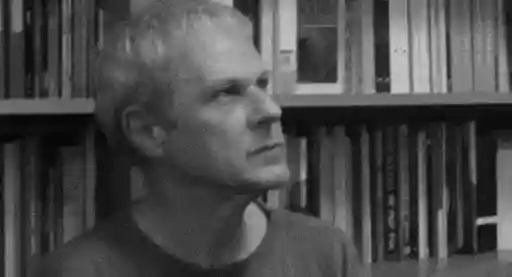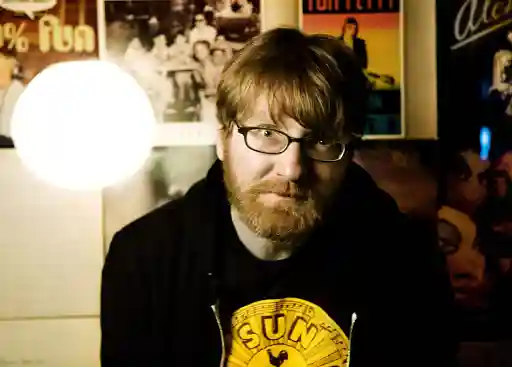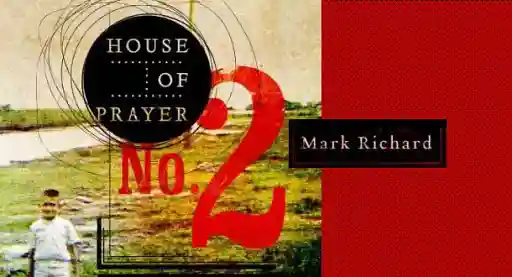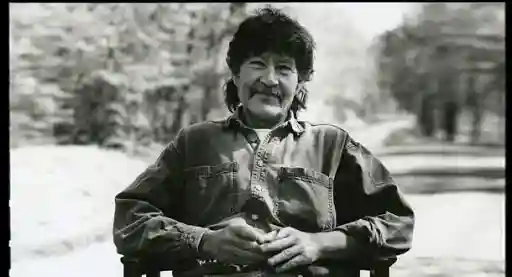Photo courtesy of the author
Donna Lynch is a two-time Bram Stoker Award-nominated dark fiction writer, spoken word artist, and the co-founder—along with her husband, artist and musician Steven Archer—of the dark electro-rock band Ego Likeness (Metropolis Records). Her most recent collection, Girls From the County, is a book that not only challenges fears about our homes, it makes us questions our childhood memories and the things we tell ourselves didn't happen or weren't possible.
Girls From the County, while similar in tone to your other books, is vastly different in its own right as you’ve pulled from memory, nostalgia, and place. What made you want to write this book? Why was now the right time to tell some of these stories, and why did poetry feel like the right medium to tell them in?
Okay, this going to be a lot, because you’ve asked some really great questions.
There was series of events that led me to this theme, and I may have them out of order, because it’s been 2020 for several years now and I’ve lost the timeline.
I’d written a couple of folklore pieces on a whim but shelved them because there are plenty of books on folklore and I didn’t feel motivated enough by the topic to do a whole collection.
I had also watched a film by Rose Glass called Saint Maud that took my breath away, and something started turning in my brain. Truly, the last thirty seconds of that film [are some] of the most enthralling and horrific scenes I can think of. If I can ever write something that makes the reader feel the way that scene made me feel, I will die happy.
Years ago, I wrote a short poem for Daughters of Lilith called "The Burner," wherein I imagined an entity called Immolaine, who is an involuntary fire starter, unable to regulate her emotions and contain her power. She’s not angry, she’s just full.
I resurrected her in Choking Back the Devil, this time as a saint in "The Cult of Immolaine," which was less about her and more about the two young women who find and embrace her and interpret her in a way that makes sense to them, to tragic results.
So, if you’ve seen Saint Maud, you can understand how it all clicked in my head. I couldn’t stop thinking about the young women in my piece or the character Maud—driven by passion and desperation, spirit and obsession, looking to find connections and signs everywhere because without them, what if there’s nothing? They are ultimately driven to violence because they are just so full of fear of that nothing and the chaos and mania it brings until there’s no space left inside.
I started spiraling, thinking of all of the girls I knew when I was younger who were full, and all the times I, myself, was too full and wanted to burn it off.
I thought about one girl in particular, who I only knew tangentially in high school. She’d left home under bad circumstances and was renting a room in an older man’s apartment. I’ll never forget going there with our mutual friends and whispering in her room about how sketchy the guy was and how she pulled a hammer from under her mattress and said, “If it comes to that, I’ll do what I have to do.” She wasn’t even upset. Just resigned.
I never saw her again after that night. I don’t even remember her name.
But with the weight of her resolution heavy on my mind, I wrote “The Thing About Girls with Hammers,” and a bunch of doors starting opening, creaking at first, then slamming.
I took to watching a lot of true crime documentaries and Buzzfeed: Unsolved, which is a funny series about mysterious events—which sent me, once again, down some folklore and ghostly rabbit holes.
The final push came when I started dreaming about a friend of almost thirty years who had overdosed some months prior.
She was in my head every night, probably because I was thinking so much about those years and at the same time, still grieving her. She was like my twin back then. People were constantly mixing us up. I could see us in my dreams and suddenly we were the two girls worshipping Immolaine—only one of us remaining to tell the story, just like in the poem.
I do this in the form of poetry because there are too many intangible and ephemeral things I can’t put into fully formed sentences or paragraphs. All I can do is give you some snapshots and notes. If I tried to do more, I’d get it all wrong. And I want to leave room for your own stories. Too many details make them solely my own.
What was the writing process like during Girls From the County? Did it differ from any of your other projects, or did you find your routine consistent with this one? Also, how did you mentally protect yourself while working on and revisiting some of the more traumatic memories of this collection?
I don’t have one and I didn’t.
I am the worst person in the world to give logistical writing advice on process. I don’t write everyday like more successful writers say you have to—and I don’t disagree with that advice! Obviously, there’s a reason writers who say this are usually more successful than I’ve been. The irony isn’t lost on me. But there is a degree of ableism in that advice. My mental and physical health, my home life and other career aren’t conducive to a writing routine. So, I write when I feel like it and when I can. I write with the TV on. I write in uncomfortable sitting positions. I don’t have a desk or a writing space. I don’t know how to use most writing programs and frequently lose documents and cry until my husband helps me retrieve them. And you, personally, know all too well I can’t edit or format for shit. I don’t make any of this easy on myself.
So let me be a role model to all the fantastic train wrecks out there: it will be hard, but you can be a hot mess and still manage to be a writer. Just make sure you’re bringing enough to the table that it’s worth it for people to put up with your nonsense.
And—to mirror your sage advice—don’t be a dick.
I don’t protect myself, but in some ways I don’t need to. I’ve spent years working through the heavy trauma and made peace with the smaller sharp things. I let myself feel hurt or angry and I let myself cry and grieve while I wrote.
Sometimes, in the revision process I stabbed myself a little harder because I knew I was holding back. We are so afraid of pain, and for what?
I don’t mean major trauma that has a physiological impact as profound as or even more so than a psychological one. Trauma requires treatment to overcome and it’s a ton of hard work. But painful memories? We are so afraid to let them in.
This book was my second big exercise in Buddhist non-attachment (Choking Back the Devil being the first). I can remember an event for years, but the feelings attached are temporary, so I can let them in and out as needed. And even that unpleasant memory is temporary, because we are temporary. The feelings are real but they aren’t my present reality. I’m not feeling that pain anymore. I’m just remembering it.
As an avid reader of your work, something I always love experiencing with your poetry is this claustrophobic, almost asphyxiating feel. I often feel like I’m experiencing the shock and the weight of what you’re writing about, which is both wonderfully cathartic and absolutely terrifying. What I think is interesting about Girls from the County is that while readers still get that feeling, they’re met with it in these wide-open spaces (woods, dirt roads, fields, etc.) as opposed to somewhere more confined. Can you talk about what the setting in this book means to you and how it lent itself to its own brand of horror?
If there’s something scarier than navigating dark hiding places, it has to be having nowhere to hide. Is there any place that makes you more vulnerable?
One of the best decisions ever made in horror was when writers and directors started moving out of dark castles and graveyards and into suburbia in the broad daylight. Not only was it accurate, but it took away our safety. I think one of the jobs of horror is to run you ragged looking for the safe place until you realize there isn’t one.
There’s an anxiety that can come in a calm, beautiful place because you know there’s nothing about that beauty that can keep you safe. This is a lie we tell ourselves—which is a huge part of the book. [We grow] up thinking, “that can’t happen here” while it is absolutely happening.
In your poem “Everything Was Haunted,” you write: “And then/just like that/ I was a ghost.” I connected with the themes in the poems a lot: silence, invisibility, hauntings, and warnings. I get the sense that most children/adolescents feel those things at some point in their life, but as a woman, I felt a kinship to you in this moment because I not only felt those feelings during puberty, but I also very much feel them now as a grown adult. What do you think the connection is between women and hauntings; I ask this because so often in horror, it’s the female protagonist who is making the connection, feeling the unease, or getting possessed by whatever has been left behind.
There was a time I might’ve said that it was something intrinsic to woman, attributing it to biology—feeling a deeper connection to life and death.
But I don’t believe that, anymore. It’s far too binary, it excludes people who can’t give birth, and those who exist elsewhere on the spectrum, physically, emotionally or physiologically, and it’s based in so many gender stereotypes: the feminine instinct, psychic sensitivity, heightened empathy, open expressions of emotion—all the traits that were, indeed, used to make us into witches and martyrs—which is where I think the feeling of kinship you spoke of comes from, which is completely valid. We have a shared history, going back a very, very long time.
But the truth is I think anyone can be haunted. Of course, I definitely believe there is a very real imbalance—as women, we are silenced and made to feel small or invisible, and that lends itself to a certain frailty that we see expressed in horror. It also leads to rage and vengeance—the things that have made us into wraiths.
But when it comes to being haunted, I don’t believe we own that. I think our society doesn’t encourage masc people to explore it, let alone admit to it.
The real boy in ‘Did I Imagine Travis?’ was as haunted as I was. Maybe more. But I guarantee you he wasn’t allowed to talk about it. I’m certain no one else believed him.
As a girl who grew up in the country, I loved how you focused on local lore and legend throughout the book. I think—to some extent—that everyone grows up with certain ghost stories or tragedies in their town, and for me, it was this mysterious green house we passed on our way to church on Sundays that everyone—including my dad—swore was haunted (and between the two of us, it totally was!). Were there legends or ghost stories you didn’t write about in the book that you could share with us now? If not, what was your favorite ghost story growing up?
How did we all have that green house?! My cousins told me the old green house with the black roof a few miles from their farm was haunted. It was even worse that they wouldn’t tell you what happened there. They just let my seven-year-old brain go wild!
I wish there had been more specific stories, but they were all variations on a theme, so it was easy to spin our own yarns. Little girls are so weird. At eight, nine, ten we were all convinced we were secretly witches. I tried so hard to communicate with animals, and I could absolutely talk to ghosts. You had Brandy down in the woods fighting off demon possession and some other girl in the creek turning into a mermaid. Then we’d come back to the house, sweaty and wet and muddy and eat pizza bagels. Those were some wild years.
One very personal ghost story that I cannot confirm nor deny was my grandmother recalling that I used to walk around the house at age four humming and whistling the same songs as my grandfather, an architect who built our house, and who died seven years before I was born. She said I used to go outside and walk around, “surveying the property” like he used to do, as well. Maybe I had some big ideas for the land. Who knows?
This house is a couple of miles from the house that John Wilkes Booth and his brother Edwin lived in, and people used to tell stories about happenings there, and we are less than a mile from Elijah Bond’s house. He patented the Ouija Board, but that’s not so much a supernatural tale as much as a fun fact.
My family has been in this county for a very long time, so I wish I’d been aware of that back when my gran was still alive, to ask her. It’s likely our families knew each other.
The poems "Jericho" and "Sway" are about places local to us. Several others, as well, like the pieces that reference quarries, and worst of all— “Residents,” though my friend Rebecca (who took the photo 30 years ago) and I went back there last year and the house was gone. Rather, there was a new house standing in its place, so good luck to that family, I guess!
My greatest disappointment, living in Maryland, is that we don’t have a solid Blair Witch-type entity. A Goatman, a Pigman, Chessie, a few other random Cryptids…but no terrifying, murderous witches. I’ve been lobbying for the position since the pandemic began, but no one ever comes to our woods except Amazon and our sweet little Chinese restaurant delivery guy who is no longer scared of us or our Texas Chainsaw Massacre-looking porch.
A pattern I’ve noticed in this collection, and in most of your work, is a focus on murdered or lost girls. I think it’s safe to say that the world, and certainly the publishing industry shares this obsession, too, and I’ve love to hear your take about why you think that is? Furthermore, why do you think women crave these stories and tend to be the ones devouring true crime stories at alarming rates?
Of course, we have to face that there’s a huge exploitative factor. But it’s also a terrible reality. And I think art and media exploit things like this because they are a reality. It’s the ultimate horror and it’s taboo. These are places that are forbidden to anyone that it hasn’t happened to. You can’t tell someone what it’s like to be murdered.
We imagine ghost stories because it’s the only way we can “know” what it is to die. They are mysteries we crave to solve and also never want to solve. It’s that itch that can’t be scratched. It’s our Event Horizon.
Girls are told from day one to watch out, don’t go with strange men, carry your keys between your fingers, look under and in the back seat of your car, don’t walk anywhere at night by yourself, never let an abductor take you somewhere private, and so on. Which is so ironic considering that we were simultaneously told we were safe here in the suburbs and rural spaces.
Although I’m reluctant to call that total hypocrisy, because I think times were changing—or our awareness was. We never locked our doors out here in the 70s and early 80s, even though those decades were the pinnacle of serial killer activity (but those things don’t happen here, right?) A few years later, that changed. Doors stayed locked.
For every femme, murder is always on the table from the moment we’re old enough to leave the house.
I think a lot of us find a fascination in it because it’s been ingrained in us. It’s been in our heads our entire lives. I also think it’s a control mechanism. If we watch the documentaries and read true crime and we see exactly how it happens, we’ll be better equipped. Maybe that’s true, maybe not, but it’s just one way we scramble to find that safety.
We have a lot of similar interests, the biggest one probably being our shared affection for the witch. For readers who are just getting to know your work—and for those who just want to know more!—can you talk a bit about what draws you to the witch and the archetypes surrounding her?
The witch archetype is so fucking cool, and such a paradox. She’s a villain and a victim. She’s magical and also a regular woman who knew too much, therefore she is fiction and non-fiction. You can burn her, drown her, cut her up, but she’s also an indestructible force. A healer and a murderer.
I’ve talked before about how I actually adore the worst of the witches. The child-eating witches, the picking-their-teeth-with-your-bones witches. The ones whose feet are on backwards or don’t touch the ground and will bend your spine in half or crawl down your throat and eat your heart.
I love the violence and terror that they conjure.
I love them when they are driven to that violence because of mistreatment and I love them when they are simply born feral, or not “born” at all. They just existed one day, fully formed, and never stopped. I love them when they come back from their own murder as a vengeful entity, and I love them when they start cursing people because they weren’t invited to parties.
When you have been wronged, what archetype better suits your revenge fantasy than one who has so few limitations?
We can get into our perpetrator’s house and make a banquet of their organs, or we can piss in a jar of hair and nails, bury it in the yard and ruin their lives from afar. As witches, we customize our vengeance.
With all due respect to Wicca and other pagan beliefs and organizations, I’ve had to explain more than once that they are not the witches I write about.
I was always more Grimm than Gardner.
My witches are of brutal folklore. They are retroactively living their three-fold karma, they’ve already suffered and paid for their crimes, so now they are wild and free in their darkness.
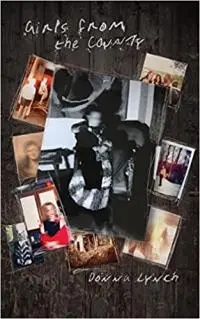 Because memory played such an important part in both the writing and the direction of this book, can you talk a little bit about how you blurred that line between memoir and genre, and how you practiced memory retrieval while writing this book?
Because memory played such an important part in both the writing and the direction of this book, can you talk a little bit about how you blurred that line between memoir and genre, and how you practiced memory retrieval while writing this book?
It wasn’t hard. Moving back to the county, I see these places every day. And in specifically writing about the moments that left marks, all I needed to do was look through my boxes of photographs and in the mirror. The girls in this book remember every time someone left a mark. We remember all the times we gave them to ourselves. Even though we all had different methods of coping, or avoiding, it’s not like you ever forget.
And as for the genre, the horror? It just came with the territory.
I like to think that anytime writers are pulling from their own experiences, especially years later, we can look back on those moments with fresh eyes. What is something you learned or discovered about yourself after writing this collection?
As I've aged and my mental illness has progressed, I’ve yet to fully come to terms with who I’ve been the past couple decades. There’s a whole world of pain and shame and I’m not ready to write that book yet. I touch on it here and there, but I haven’t unlocked those boxes. I know exactly what’s in them but don’t know that I’ll ever share the contents. They might have to go straight into the fire.
But the girl I wrote this book for…she was just fine. She was pretty and smart and fun and skilled and had no idea and I hate that for her. She tolerated so much shit because she thought she deserved it. All of the girls in this book did, which is exactly why it’s been resonating with people so far.
If fifteen-year-old you was your daughter or your best friend, you’d think she was amazing. But those girls will never know that. Fifteen-year-old me will never know that.
What I learned about myself was that I needed to grieve that loss. I needed to grieve a lot of losses and my heart was closing because I didn’t want to feel that sadness, and that’s no way to live. I started letting my heart close after a major loss in 2009. I shut the things I needed out and let all the toxic things in me take over.
That young girl would be so sad to know she lived through everything—all of that bullshit—to just one day not feel alive. To not feel things in her heart anymore.
If there’s any part of her still in me, I owe her that much.
What poets are you currently reading? Are there any collections you’re looking forward to adding to your TBR list?
I’m readying myself for Cynthia Pelayo’s Crime Scene.
I haven’t been able to read much this summer because I’ve got Covid brain on top of everything else that’s busted in my head. Truly it’s amazing I can even put a sentence together. I’m pretty sure I’ve been working on this interview for 187 days now, all sense of time and space has dissolved. I’m hoping the fog lifts soon because I have a lot to catch up on.
I am ridiculously biased, but I will forever be so impressed by the poets whose work I’ve been exposed to through Raw Dog Screaming Press, and through the HWA. Everyone is just so freaking good. Sometimes I can’t believe my name is in there.
What’s next for your readers?
I’m finally going to give a travel collection a shot. I haven’t figured out the logistics, but I’ve spent the past few years collecting [and editing] my favorite travel photos spanning over 30 years. I do mostly manual manipulation, more so than filters, with the intention of capturing the way I remember it feeling, as opposed to the natural reality. I’m not pretending to be a professional photographer—the last decade worth of shots being taken on iPhones—but this is very much an art project. The part that comes next is to write companion pieces for them, either fictional or true to life.
I don’t know how realistic it will be to publish something that involved, maybe it will just end up being two separate things, but it’s something for me to aim for.
When I think about all those spaces and all those roads, hours and miles…it’s literally how I’ve spent half my life now.
I still have a lot of stories to tell.
Get Girls From the County directly from Raw Dog Screaming Press or at Amazon
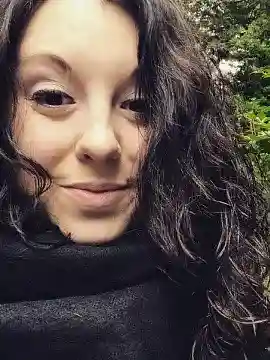
About the author
Stephanie M. Wytovich is an American poet, novelist, and essayist. Her work has been showcased in numerous venues such as Weird Tales, Gutted: Beautiful Horror Stories, Fantastic Tales of Terror, Year's Best Hardcore Horror: Volume 2, The Best Horror of the Year: Volume 8, and more.
Wytovich is the Poetry Editor for Raw Dog Screaming Press, an adjunct at Western Connecticut State University, Southern New Hampshire University, and Point Park University, and a mentor with Crystal Lake Publishing. She is a member of the Science Fiction Poetry Association, and an active member of the Horror Writers Association.
Her Bram Stoker Award-winning poetry collection, Brothel, earned a home with Raw Dog Screaming Press alongside Hysteria: A Collection of Madness, Mourning Jewelry, An Exorcism of Angels, Sheet Music to My Acoustic Nightmare, and most recently, The Apocalyptic Mannequin. Her debut novel, The Eighth, is published with Dark Regions Press.
Follow Wytovich via her Substack and on Twitter @SWytovich.
